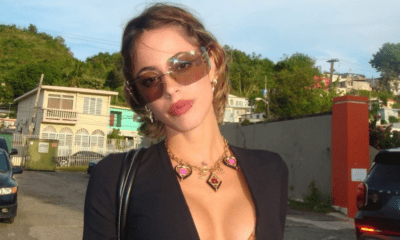INTERNACIONAL
Desperate young Guatemalans try to reach the US even after horrific deaths of migrating relatives

COMITANCILLO, Guatemala (AP) — Every night for nearly two years, Glendy Aracely Ramírez has prayed by the altar in her parents’ mud-brick bedroom where, under a large crucifix, is a picture of her sister Blanca. The 23-year-old died alongside 50 other migrants in a smuggler’s tractor-trailer in Texas.
«I ask God for my family’s health and that I might get to the United States one day. My mom asks God that she won’t have to see another accident,» said Glendy, 17, who has already packed a small backpack for her own journey from the family’s home 8,900 feet (2,700 meters) up in Guatemala’s highlands.
WHO IS GUATEMALA’S NEW PRESIDENT AND CAN HE DELIVER ON PROMISED CHANGE?
Her «coyote» postponed it for a few days because of a flare-up in violence among Mexican drug cartels that control migrants’ routes to the United States, but she is undeterred.
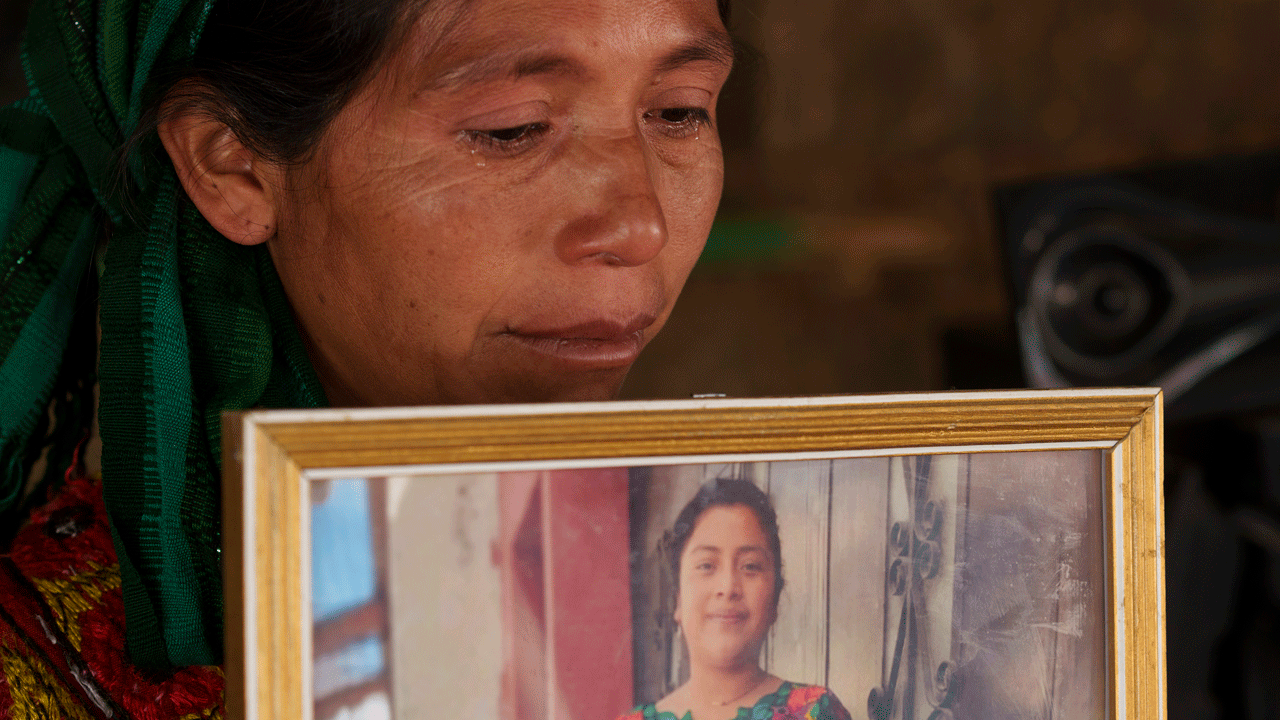
Olivia Orozco Lopez cries as she holds a portrait of her late daughter Celestina Carolina during an interview in the Culvilla hamlet of Tejutla, Guatemala, Tuesday, March 19, 2024. Carolina died asphyxiated alongside 50 other migrants in a smugglers’ trailer truck in San Antonio, Texas in June 2022. (AP Photo/Moises Castillo)
Tens of thousands of youths from this region would rather take deadly risks — even repeatedly — than stay behind where they see no future. Blanca’s fatal journey was her third attempt to reach the U.S.
«I want to go there, because here there are no opportunities, even though Mom says that I’ll suffer what Blanca did,» Glendy said as she sat with her mother, Filomena Crisóstomo, in their tidy dirt-floor courtyard. «I’d like to have a house, help my family and get ahead.»
The record-high numbers of migrants illegally crossing the U.S.-Mexico border have made migration a top concern in this U.S. presidential election year. Among those migrants, the largest group of unaccompanied minors has been from Guatemala — nearly 50,000 of the 137,000 encounters recorded by border authorities in the last fiscal year.
Most come from tiny hamlets in the predominantly Indigenous Western Highlands. Daily wages top out around the equivalent of $9, far below the supposed legal minimum. In tiny plots of brittle clay soil — often the only collateral for loans to pay smugglers’ fees that can reach $20,000 — many families grow corn and beans to eat.
Little else sprouts from the steep mountainsides except for the exuberantly decorated, multi-story concrete homes built with remittances from loved ones in the United States — constant reminders of what’s possible if only one makes it «to the north.»
In the small town of Comitancillo, two murals serve as a different reminder — they’re memorials to the nearly two dozen local migrants who died in recent mass tragedies. They either asphyxiated in the trailer in San Antonio, Texas, in June 2022, or were shot and set afire by rogue police officers in Camargo, Mexico, in January 2021.
It took less than a week after the remains from the Camargo massacre were returned to Comitancillo for burial before the first surviving family member left for the U.S.
And with a 17-year-old boy who made it to Florida this winter, now at least one relative has migrated from nearly all of the families since the massacre, said the Rev. José Luis González, a priest with the Jesuit Migration Network. The lone exception was an older man whose family was already north of the border; he died trying to make it back after being deported, González said.
«It’s an evident sign that the fear to stay is bigger than the fear to go,» said González, who started ministering to the affected families when they traveled some six hours to Guatemala’s capital for DNA tests to identify the remains.
Many families credit the Jesuit group for being the only institution that has stayed by their side, regularly traveling to Comitancillo to provide legal updates — nearly a dozen police officers were sentenced last fall in the Camargo case — as well psychological, humanitarian and pastoral assistance.
On a recent morning, about 50 relatives of those lost either in Camargo or San Antonio gathered for a meeting with the Jesuit group that included workshops to process depression and grief. Most were women and children speaking Mam, one of Guatemala’s two dozen Mayan languages.
One of the handful of fathers at the meeting was Virgilio Ambrocio. The eldest of his eight children, Celestina Carolina, was making less than $90 a month as a housekeeper in Guatemala City and sending half of that back home to help feed her siblings. So she decided to try her luck in the United States, and died at 23 in the trailer.
«The hardest part is, who’s going to help us now,» Ambrocio said as dust swirled around his home. His wife, Olivia Orozco, wept silently, while holding a framed photo of a smiling Celestina.
The primary driver of migration over the past 10 years is the inability to get jobs to pay for the most basic necessities, said Ursula Roldán, a researcher at Rafael Landívar University in Guatemala City. That’s exacerbated by the debts families incur to pay the smugglers, which would take 10 years’ worth of in-country wages to repay — making it crucial to get to the U.S. and send back remittances from far higher wages.
Rising violence in the Mexican regions bordering Guatemala is also pushing more migrants to head to the U.S. instead of working seasonal agricultural jobs there. Climate change is affecting even subsistence farming.
In their one-room home near Comitancillo, Reina Coronado tried to convince the eight children she had since she married at 16 that they didn’t have to risk their lives.
Some went north anyway, including Aracely Florentina Marroquín, 21, who had completed high school like Blanca and, like her, felt she had wasted her family’s money in studying since she still couldn’t get a professional job.
The last thing she told Coronado was that she’d go only for four years and send money to build a kitchen, so she wouldn’t have to cook tortillas over an open fire. Next came the call from Texas that made Coronado cry for months. Today, she finds some comfort caring for two young daughters still living with her and the animals she raises.
«Even though it’s a struggle, one has to fight, to try to keep going,» Coronado said. «I go to work and that way the day, and the hard moments, pass. Sometimes I do it crying, but I trust in our Father, the Lord.»
Marcelina Tomás has also been praying for strength since her oldest son, Anderson Pablo, was murdered in Camargo — and especially in recent months since his younger brother Emerson, 17, also went to the U.S.
Anderson was in 9th grade when the pandemic hit and he started working in the fields alongside his father. Their wages of around $6 a day were enough to afford tortillas each day for the family of 11, but not something to go with them, Tomás said. So she and her husband agreed to help Anderson get loans for the $16,000 smuggling fee.
Twelve days after Anderson, 16, left their home near Comitancillo, news of the Camargo massacre arrived via social media. Pregnant with her tenth child, Tomás, 37, had to leave her children with family members and spend a night away from home for the first time to undergo DNA tests in the capital that allowed Anderson’s partial remains to be identified and buried.
«Only God knows what happened. And all for wanting to get ahead,» Tomás said. «I relied on him, and he treated his little siblings so well.»
Anderson had dissuaded Emerson from going along, saying he should stay in school a bit longer. According to Tomás, Emerson was heartbroken after his brother’s death; he enrolled in high school, but soon quit to work in a potato field.
Around the third anniversary of Anderson’s death, Emerson said he wanted to migrate, because many other youths had gone too. Tomás reminded him of Anderson’s fate, the tragedy in San Antonio, the neighbors’ children who died in the border deserts or in work accidents in the U.S.
CLICK HERE TO GET THE FOX NEWS APP
«‘No,’ he told me, ‘I’m going.’ And he went,» Tomás said by the altar where three pictures of Anderson stand by a crucifix, with a lit candle and a vase of calla lilies.
Anderson’s dream was to earn enough to move the family from their one-room, mud-brick house to a concrete one with separate spaces for his parents, his brothers and his sisters. They live in such a house now, built with donations received after his death.
But nobody sleeps in the room with the altar. They’re keeping it as Anderson’s room.
INTERNACIONAL
La guerra con Rusia: Francia y Gran Bretaña no se ponen de acuerdo sobre una tregua en Ucrania

Desmentida británica
El plan para poner fin a la guerra
“La coalición de los dispuestos»
INTERNACIONAL
Al menos 25 muertos en nuevo accidente de carretera en Bolivia: suman más de 60 víctimas desde el sábado en la misma región

Al menos 25 personas murieron este lunes en Bolivia cuando un bus de pasajeros se desbarrancó y rodó por una pendiente de unos 500 metros luego de impactar con una camioneta en Potosí, en el sur del país, informó la Fiscalía.
Es el segundo accidente con un elevado número de víctimas en tres días. El sábado murieron 37 ocupantes de dos autobuses que chocaron de frente también en Potosí, durante las fiestas de Carnaval.
El nuevo siniestro se produjo en la carretera Oruro-Potosí, en la localidad de Las Leñas, unos 90 kilómetros al norte de la ciudad de Potosí. El choque frontal de los vehículos dejó «como saldo 25 personas fallecidas y 26 heridas», precisó el Ministerio Público en un comunicado.
Las autoridades presumen que el conductor de la camioneta, que se encuentra internado en un centro de salud cercano, fue el responsable del siniestro luego de invadir el carril contrario.
«Está en el hospital (…) con custodio policial porque ya ha sido aprehendido por la Fiscalía», detalló a la AFP Limberth Choque, vocero de la policía.
Todos los fallecidos eran ocupantes del bus que se desbarrancó, añadió.
Según reportes policiales, el vehículo de pasajeros había partido desde Oruro, donde el fin de semana se celebró el Carnaval de Oruro, una de las fiestas más grandes de América Latina, que recibe cada año a decenas de miles de personas.
INTERNACIONAL
Delegation of hostages released by Hamas traveling to DC to meet with Trump admin officials
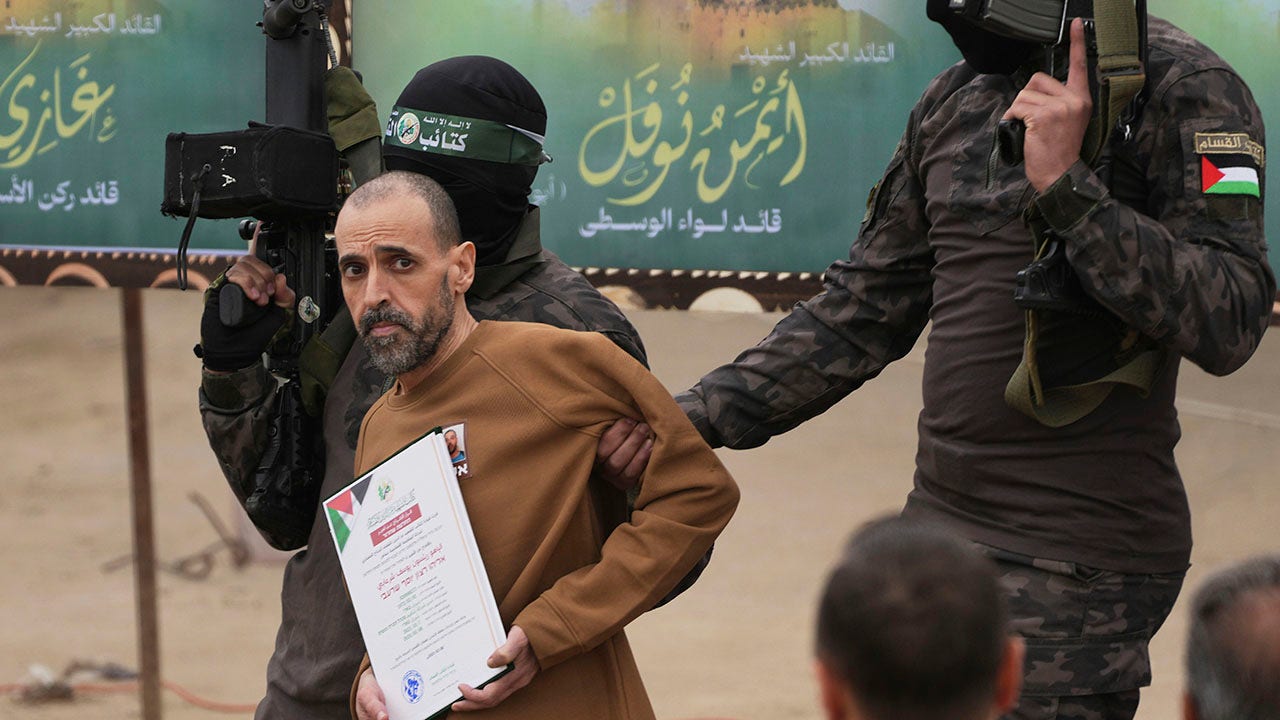
A group of seven people who were freed from Hamas’ captivity are traveling to Washington, D.C., to meet with U.S. officials.
Eli Sharabi, Doron Steinbrecher, Keith Siegel, Aviva Siegel, Naama Levy, Omer Shem Tov and Iair Horn will meet with officials from the Trump administration, according to the Hostages and Missing Families Forum Headquarters.
The released hostages will express their gratitude to the Trump administration for the president’s commitment to bringing all the hostages home.
The group will provide firsthand testimony about their experiences in Hamas’ tunnels.
WHITE HOUSE BACKS ISRAEL’S DECISION TO HALT GAZA AID SHIPMENTS UNTIL HAMAS ACCEPTS CEASEFIRE EXTENSION
Israeli captive Eli Sharabi, who had been held hostage by Hamas in Gaza since October 7, 2023, is escorted by Hamas before being handed over to the Red Cross in Deir al-Balah, central Gaza Strip, on Saturday, Feb. 8, 2025. (AP)
The delegation will stress to government officials about the need to require Hamas to return all remaining hostages immediately in a single phase.
Israeli Prime Minister Benjamin Netanyahu spoke Sunday with Sharabi.
«I deeply appreciate the courageous way you are sharing your experience, and it is also important that you share it with President Trump,» Netanyahu told him. «Our goal is to bring all the hostages home – and we will not relent for a moment.»
Sharabi replied that he was glad to be home and reunited with his family, but emphasized that «the remaining hostages, especially those who are still alive, must return home to their families urgently.»
«And of course, the fallen hostages, including my brother Yossi, must be brought back for burial in Israel so that their families have a grave to mourn at,» Sharabi said.
ISRAEL AGREES TO TRUMP ENVOY’S TEMPORARY GAZA CEASEFIRE EXTENSION PROPOSAL AS FIRST PHASE EXPIRES: REPORTS
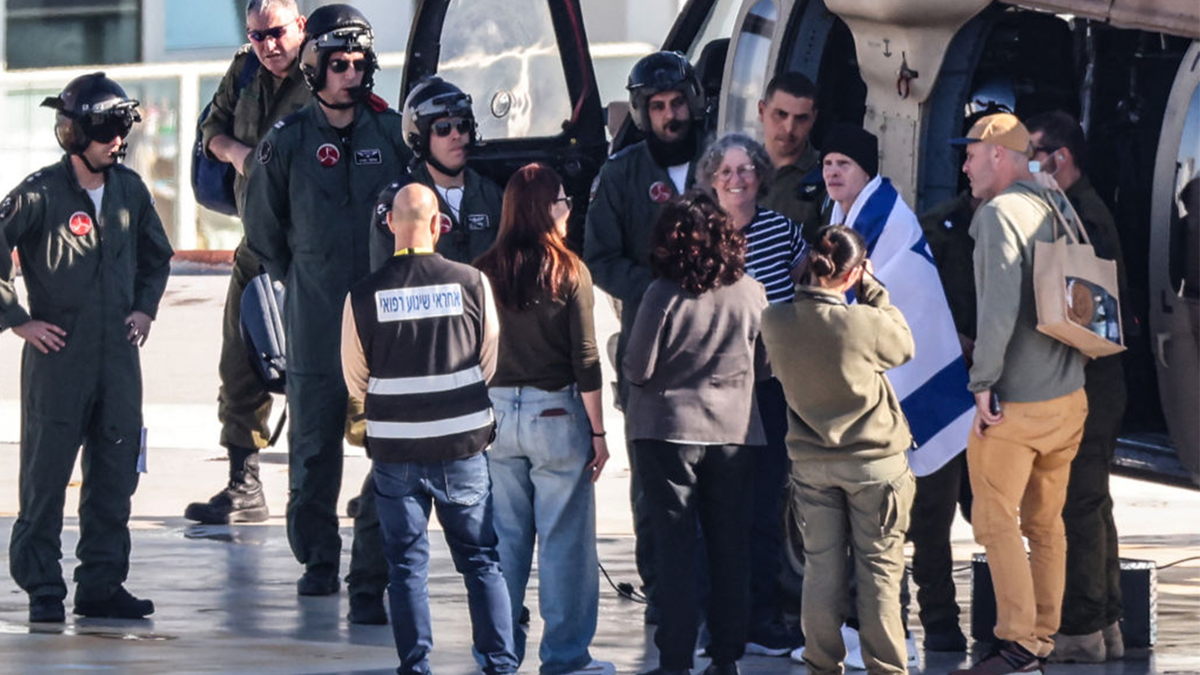
Keith Siegel, accompanied by his wife Aviva (on his left), disembarked from a military helicopter at the Tel Aviv Sourasky Medical Center on February 1, 2025. (Getty Images)
On Sunday, Israeli officials announced that they are stopping the entry of all goods and supplies into the Gaza Strip and warned Hamas it would face «additional consequences» if it does not accept a new proposal for an extended ceasefire. An Israeli official said the decision to suspend aid was made in coordination with the Trump administration.
The White House backed the move by Israel, saying that the Jewish State has «negotiated in good faith since the beginning of this administration to ensure the release of hostages held captive by Hamas terrorists.»
The first phase of the Israel-Hamas ceasefire, which included an uptick in humanitarian assistance, expired on Saturday. The two sides have not yet negotiated the second phase, in which Hamas was called to release dozens of remaining hostages in return for an Israeli pullout and a permanent ceasefire.
Israeli officials also said on Sunday that they support a proposal to extend the first phase of the ceasefire through Ramadan and Passover, or April 20. They said the proposal came from the Trump administration’s Middle East envoy, Steve Witkoff.
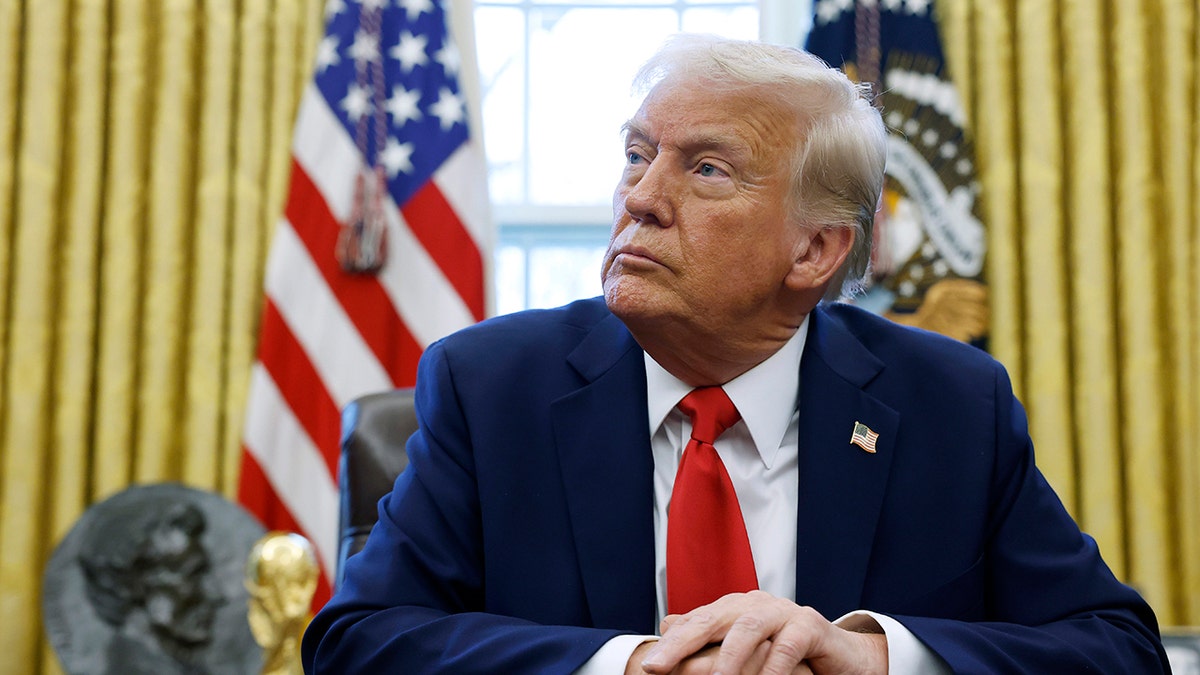
U.S. President Donald Trump speaks to reporters in the Oval Office of the White House on February 3, 2025, in Washington, D.C. (Getty Images)
CLICK HERE TO GET THE FOX NEWS APP
Under that deal, Hamas would release half the hostages on the first day and the remainder when an agreement is reached on a permanent ceasefire, according to Netanyahu’s office.
In the first phase of the ceasefire, Hamas released 25 Israeli hostages and the remains of eight others in exchange for nearly 2,000 Palestinians imprisoned by Israel. Israeli also pulled back forces from most of Gaza and allowed a surge of humanitarian aid to enter the region.
The war began when Hamas launched a surprise attack against Israel on Oct. 7, 2023, killing roughly 1,200 people and abducting more than 251. Hamas still has 59 hostages, 32 of whom are believed to be dead.
Israel’s offensive into Gaza in response to Hamas’ attack has killed more than 48,000 Palestinians, according to the Hamas-run government’s Gaza Health Ministry. It does not specify how many of the dead were terrorists or civilians.
The Associated Press contributed to this report.
-
POLITICA1 día ago
Nueva encuesta y sorpresa en la Ciudad: lidera un radical K y está tercero un abogado de famosos
-
POLITICA2 días ago
Javier Milei y sus medidas, EN VIVO: en un Congreso repleto de faltazos, el Presidente habla en cadena nacional para abrir la sesiones ordinarias
-
ECONOMIA1 día ago
«El valor del bitcoin cae un 17,11% este mes: ¿Es este el momento perfecto para invertir?







